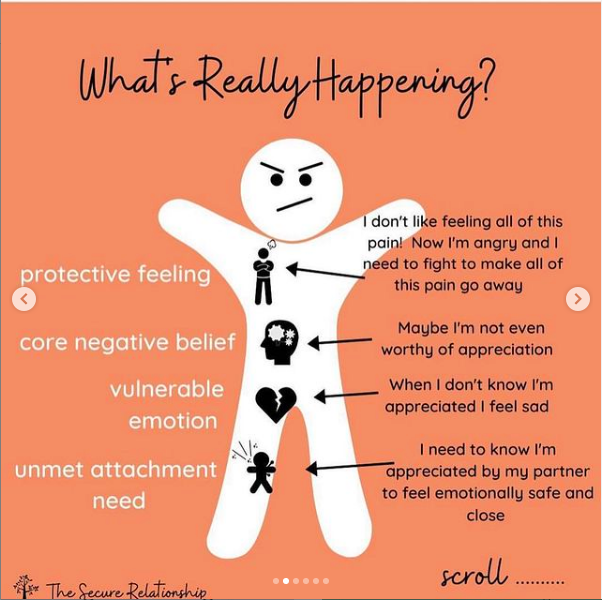"Wait. Wait. Can you say that again?"
I'm in the kitchen, and my youngest who is eight is next to me saying something about turtles and the beach.
A piece of me is replaying a past conversation with someone else as I pour some tea.
I recognize another piece wants to be in the present and connected to what he's sharing with me.
"Wait. Wait. Can you say that again?"
To intentionally choose where and how we want to be, it's important for us to consciously choose between the pieces of us that have showed up.
Maybe we're in the past.
Maybe we're in the future.
Maybe we want to be in the present.
And it can be challenging to figure out how to do that.
To deeply connect within, we can begin to learn the different parts and pieces of us and where in time they originate and also where they may want to take our attention.
To deeply connect in love with our partner, we can choose which piece of us we want to lead with or come from for a conscious conversation or an intentional move toward sexual intimacy.
We can also vulnerably share different pieces of ourselves with our partners to be seen and known, heard and vulnerable.
I love this image from @thesecurerelationship on Instagram that begins to show how different pieces of us are created and how they show up:
While I've done a lot of exploring of my supportive pieces, protective pieces, inner child pieces, and more, it wasn't until I started delving into attachment patterns and theory again in stressful circumstances (saaaaaaay, a pandemic?) to see some of these pieces come up:
A piece that presumes abandonment is coming and so runs
A piece who thinks they know how to ask for love, support, or care...and then rejects it with claims of it not being good enough while really being terrified of being abandoned
A helpless piece that feels they could be soothed if only X, Y, Z
A piece that wants to be soothed and doesn't take self-responsibility for their own needs and wants
An insecure piece that would be secure if only they got "enough" love or the "right" reassurance
A protective piece anticipating abandonment that hears "This is how it is. Conversation over." instead of "This is how I feel right now. Can we talk more?"
Getting curious about our pieces and where in time they originate, supports us to be present and connected with people in situations right in front of us.
Photo by Brett Jordan
Here are five steps for transitioning and arriving into the present moment:
STEP 1: Call Back
Notice any energy or attention left in an email, a social media post, a conversation, or anywhere else.
Call it back into your body, perhaps using your skin as a filter to cleanse it as it returns to you.
Feel yourself whole and full with all of your energy and focus contained within.
STEP 2: Set Down
Witness any pieces within you that may pull your attention into the past or into the future.
Gently say to them you'll be back soon, and right now you want to be focused on the present.
If you know when you'll be able to turn your attention back to these pieces that may have things from the past they want to talk to you about or things in the future to address, let them know.
Imagine in a playful, creative way inviting them to step outside the room or the building so that if they come back into your awareness, you can hear them coming like they're arriving down a hallway.
You can also gently remind them your intention is to be present and connected, and you can pick them up shortly.
In the meantime, let them know they can take a break, they can play, have a drink, a smoke, they can color, or do anything else they like until you're ready.
STEP 3: Connect Inward
When that feels complete, notice what supports you to connect inward.
Maybe closing your eyes.
Maybe unfocusing your gaze and looking down at your lap or at a point in the distance.
Give yourself permission to explore what feels most comfortable, safer, or feels good in this moment.
And then begin to take some soft gentle breaths into and out of your body.
From here you can notice the quality of your breath.
You can witness sensations and their locations.
Maybe you resource into a place within you that feels comfortable, neutral, or even pleasurable.
Stay here as long as you'd like, anywhere from one to five minutes.
STEP 4: Transition
Begin to transition from an inward focus to an outward one, asking yourself what feels best in this regard.
Maybe you want to stretch like you're just waking up.
Perhaps you want to take some small movements wiggling your toes or your fingers.
You could move into some slightly bigger movements with rolling your shoulders or stretching your head on your neck.
STEP 5: Arrive
As you're ready, begin to blink your eyes open or blink your eyes into focus.
Take a few moments to look down at the floor, at the walls, up at the ceiling, behind you, and in front of you.
Tilt your head on your neck and really take in the space.
Arrive to your physical, external room as a secure, safe, supportive space while continuing to stay connected to your inner experience as well.
You can use this quick practice to transition and arrive between work and home, home and work, before conversations with your children, parents, or partner.
Consciously come into presence and connection within.
And enjoy. :)
Offering so much love,
Daniela



